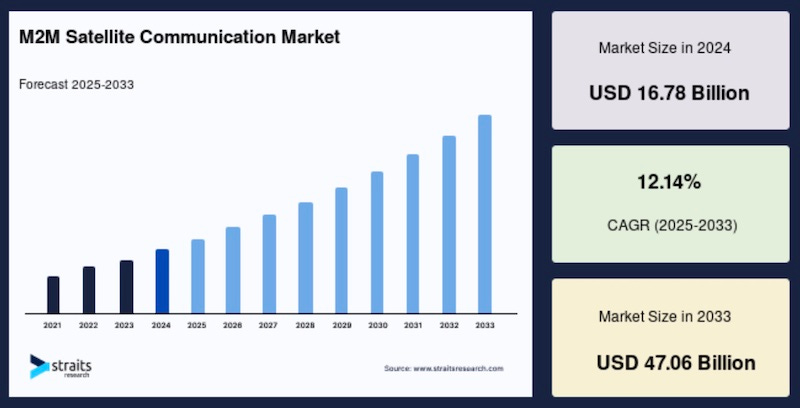M2M Satellite Communication Market Report Forecasts Growth
Driven by Strong Demand From the Government and Defense Sectors
The global M2M (Machine toMachine) satellite communication market size was valued at $16.78 billion in 2024 and is estimated to grow from $18.82 billion in 2025 to reach $47.06 billion by 2033, growing at a CAGR of 12.14% during the forecast period (2025–2033), according to a new report from Straits Research.
The market is driven by strong demand from th…
Keep reading with a 7-day free trial
Subscribe to The Journal of Space Commerce to keep reading this post and get 7 days of free access to the full post archives.



